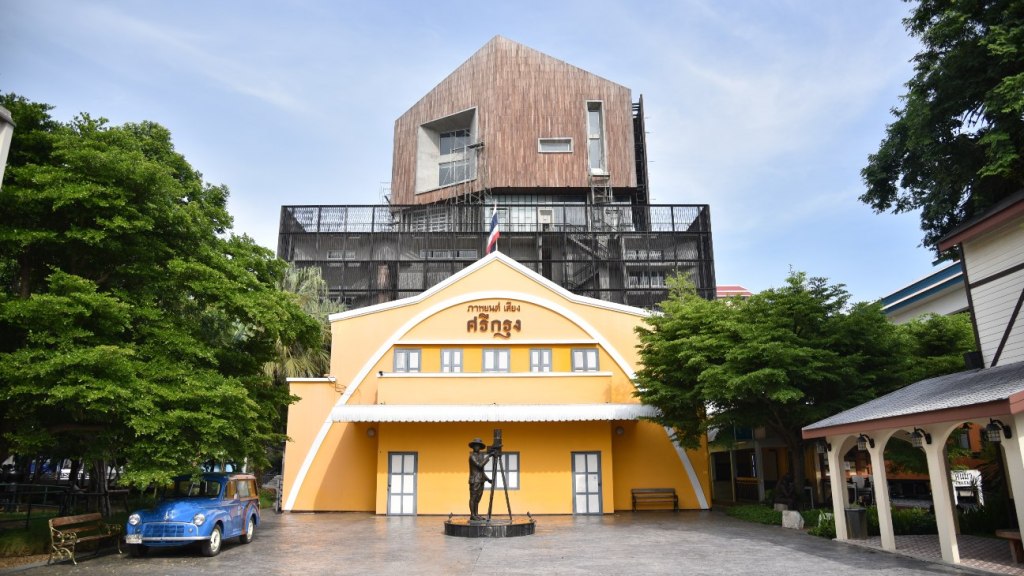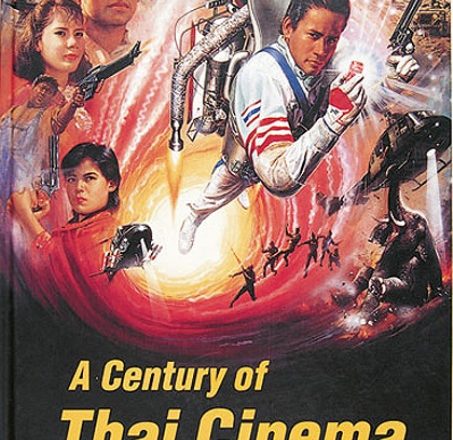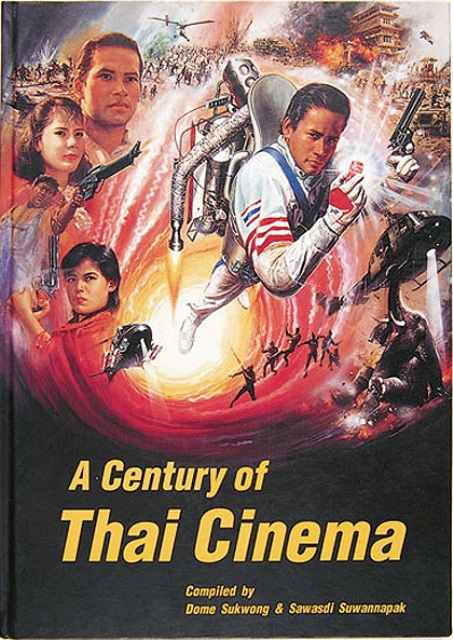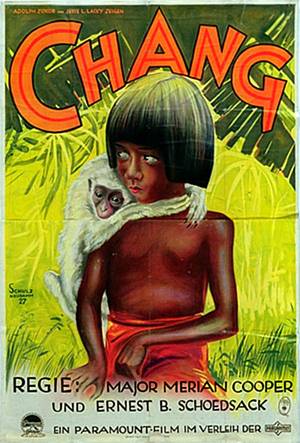Join us on a journey as we explore the captivating evolution of Thai cinema, from its humble beginnings as silent films to its current status as a thriving industry of blockbuster hits. Roaming through Thailand’s vibrant cities, indulging in its mouthwatering cuisine, and basking in the beauty of its stunning beaches, we uncover the roots and transformations that have shaped Thai cinema into what it is today. Step into the world of Thai cinema and delve into its fascinating history, as we delve into the cultural insights that this rich art form has to offer.

Early Beginnings of Thai Cinema
Introduction of Cinema to Thailand
Cinema was introduced to Thailand in the early 1900s during the reign of King Rama VI. It was a time of modernization and westernization, and the concept of moving pictures fascinated the Thai people. The first cinemas were established in Bangkok, initially showing films imported from Europe and the United States.
The First Thai Film
In 1923, the first Thai-produced film, “Miss Suwanna of Siam,” was released. Directed by Henry MacRae, an American filmmaker, the film centered around a love story set in Thailand. It was a hybrid production, combining Western filmmaking techniques with Thai aesthetics and cultural elements. While the film was commercially successful, it faced criticism for its portrayal of Thai society.
The Silent Film Era
The 1920s and 1930s marked the silent film era in Thailand. Thai filmmakers began producing their own silent films, often featuring historical dramas, romance, and comedic plots. These films were accompanied by live music, sound effects, and sometimes narrators to enhance the viewing experience.
During this era, masterpieces such as “Chok Sorng Chan” (Double Luck) directed by Manit Wasuwat and “Khrai Di” (The King of Vampires) directed by Val Bromley gained immense popularity. Thai actors and actresses, known as nang yai, became household names and captivated audiences with their performances.
The Impact of Western Filmmaking on Thai Cinema
Western filmmaking techniques significantly influenced Thai cinema during its early years. This influence can be seen in the visual style, narratives, and production values of Thai films. Western directors and cinematographers were often invited to work on Thai productions, further shaping the industry.
The Golden Age of Thai Cinema
Introduction of Sound in Thai Films
The introduction of sound in Thai films in the late 1930s ushered in a new era for Thai cinema. Talkies, as they were called, allowed for greater storytelling possibilities. Sound effects, music, and dialogue added depth to the films, capturing the imagination of the audience.
The Birth of Thai Movie Stars
The Golden Age of Thai Cinema was also marked by the rise of Thai movie stars who became icons in their own right. Prominent actors such as Sangthong, Sawitree Samipak, and Jatukam Ramatha rose to fame during this period, captivating audiences with their performances and becoming household names across the country.
The Emergence of Film Genres
With the advancement of technology and increased popularity, Thai filmmakers began exploring a variety of genres during the Golden Age. Romantic dramas, epic historical films, and action-packed adventures graced the silver screen. Filmmakers began incorporating Thai folklore and mythology, adding a unique cultural flavor to their productions.
Collaborations with International Filmmakers
Thai filmmakers also collaborated with international directors, cinematographers, and actors during this era. The exchange of knowledge and ideas helped in further expanding the scope and quality of Thai films. These collaborations laid the foundation for Thai cinema to gain recognition internationally.
Challenges and Opportunities
The Impact of Political Turmoil on Thai Cinema
The political turmoil in Thailand during certain periods of its history had a significant impact on the development of its film industry. Censorship, government interventions, and restrictions on artistic expression led to challenges for filmmakers. However, Thai cinema also served as a platform for voicing social and political commentary, pushing boundaries despite the obstacles.
The Rise of Independent Filmmakers
In reaction to the commercialization and mainstream success of Thai cinema, independent filmmakers emerged in the late 20th century. These filmmakers tackled unconventional themes, experimented with storytelling techniques, and delved into social and political issues that were often ignored by mainstream cinema. Independent films became a powerful vehicle for artistic expression and a platform for marginalized voices.
Government Support for Thai Cinema
Recognizing the cultural and economic significance of the film industry, the Thai government provided support through funding and initiatives aimed at promoting Thai cinema. Organizations such as the Thai Film Foundation were established to preserve and promote Thai film heritage, fostering a nurturing environment for local talent.
Technological Advances: The Digital Revolution
The advent of digital technology revolutionized the film industry globally, and Thailand was no exception. Digital cameras, editing software, and other technological advancements made filmmaking more accessible and cost-effective. Independent filmmakers embraced this change, producing low-budget films that offered fresh perspectives and creative storytelling.
A New Wave of Thai Cinema
Exploration of Social Issues
A new wave of Thai cinema emerged in the 2000s, characterized by its exploration of social issues and critical commentary on Thai society. Filmmakers began tackling subjects like class inequality, political corruption, and human rights, providing a thought-provoking look at contemporary Thailand.
Experimental and Art House Films
Experimental and art house films gained prominence, challenging conventional storytelling techniques and pushing the boundaries of cinematic art. These films often focused on complex character studies, metaphors, and obscure narratives, attracting a niche audience interested in thought-provoking and unconventional cinema.
Recognition at International Film Festivals
Thai films started garnering recognition at international film festivals, placing Thailand on the global map of cinema. Success at festivals such as the Cannes Film Festival and the Berlin International Film Festival not only brought prestige to Thai filmmakers but also opened doors for international collaborations and distribution opportunities.
Success of Thai Horror Films
Thai horror films gained worldwide acclaim, showcasing the unique ability of Thai filmmakers to create chilling atmospheres and terrifying narratives. Films like “Shutter” and “Pee Mak” captivated both local and international audiences, solidifying Thailand’s reputation as a hub for horror cinema.

The Emergence of Thai Blockbusters
Box Office Successes
Thai cinema witnessed the rise of blockbuster films that achieved immense popularity and commercial success. These films captivated audiences with their engaging storylines, high-quality production values, and star-studded casts. Blockbusters like “Ong-Bak: Muay Thai Warrior” and “Buppah Rahtree” became cultural phenomena, drawing audiences to cinemas in large numbers.
Influence of Hollywood
The influence of Hollywood on Thai cinema cannot be overlooked. Hollywood blockbusters and storytelling techniques inspired Thai filmmakers to create larger-than-life narratives and visual spectacles. Thai cinema embraced elements of Hollywood filmmaking while retaining its distinct Thai flavor, resulting in a unique and captivating cinematic experience.
Immersive Cinematic Experiences
Thai filmmakers incorporated innovative techniques to enhance the cinematic experience for audiences. High-quality cinematography, visual effects, and immersive sound design transported viewers into the world of the film, creating a sensory experience that captivated and entertained.
Expansion into International Markets
The success of Thai films domestically paved the way for their expansion into international markets. Filmmakers aimed to appeal to a global audience, leading to increased efforts in marketing, distribution, and international co-productions. Thai films became recognized and appreciated in various countries, contributing to the global reputation of Thai cinema.
Prominent Thai Directors and Actors
Masters of Thai Cinema
Thai cinema boasts accomplished directors who have made significant contributions to the industry. Directors such as Apichatpong Weerasethakul, Wisit Sasanatieng, and Pen-Ek Ratanaruang have received critical acclaim for their thought-provoking narratives and unique storytelling styles. Their works have brought Thai cinema to the international stage and influenced filmmakers around the world.
Rising Stars
New and emerging directors have also made their mark in Thai cinema, bringing fresh perspectives and innovative approaches to storytelling. The likes of Nontawat Numbenchapol, Anucha Boonyawatana, and Phuttiphong Aroonpheng have garnered attention for their directorial debuts, signaling a promising future for Thai cinema.
Internationally Acclaimed Filmmakers
Thai filmmakers have gained international acclaim for their works, earning prestigious awards and recognition from renowned film institutions. Directors like Apichatpong Weerasethakul, who won the Palme d’Or at the Cannes Film Festival, have put Thai cinema on the world stage, solidifying its reputation for artistic excellence and innovation.
Thai Actors Making a Mark
Thai actors and actresses have also made their mark in the international film industry. From the versatile Tony Jaa, known for his martial arts skills in films like “Ong-Bak,” to the enchanting presence of Chutimon Chuengcharoensukying in the internationally acclaimed film “Bad Genius,” Thai actors have impressed audiences with their talent and versatility.

Cultural Themes in Thai Films
Depiction of Thai History and Mythology
Thai cinema has often depicted stories rooted in Thai history and mythology. Films like “Suriyothai” and “Legend of Sudsakorn” have brought historical events and legendary tales to the big screen, preserving and showcasing Thai cultural heritage.
Exploration of Thai Society
Thai cinema has served as a mirror of Thai society, exploring social issues, cultural norms, and societal challenges. Films like “Uncle Boonmee Who Can Recall His Past Lives” by Apichatpong Weerasethakul and “Bad Genius” by Nattawut Poonpiriya have provided commentary on various aspects of Thai society, encouraging dialogue and reflection.
Representation of Thai Traditions and Customs
Filmmakers have often highlighted Thai traditions and customs in their works, aiming to preserve and promote traditional Thai culture. Festivals, rituals, and traditional practices find their way into the narratives, creating a sense of authenticity and celebrating the rich cultural heritage of Thailand.
Portrayal of Thai Cuisine and Festivals
Thai cuisine and festivals are not only a backdrop but also important elements in Thai films. The vibrant and diverse flavors of Thai food often play a significant role in the narratives, enhancing the cultural immersion for viewers. Festivals, such as Songkran and Loy Krathong, are also depicted, capturing the spirit of celebration and unity.
The Influence of Thai Cinema on Tourism
Film Tourism: Inspiring Travel to Thailand
The visual beauty showcased in Thai films has enticed audiences to explore the country further, leading to a growth in film tourism. Iconic locations featured in films, such as the floating markets in “Bangkok Dangerous” and the beaches of Krabi in “The Beach,” have become popular tourist attractions, attracting visitors from around the world.
Impact of Films on Perceptions of Thailand
Thai films have played a crucial role in shaping international perceptions of Thailand. From romantic comedies that depict Bangkok as a bustling metropolis to historical dramas that showcase the rich cultural heritage of the country, films have contributed to creating a positive and diverse image of Thailand in the minds of audiences.
Promotion of Thai Landmarks and Attractions
Through their portrayal in films, Thai landmarks and attractions have received increased exposure and recognition. The Grand Palace, Ayutthaya Historical Park, and Phi Phi Islands are just a few examples of the captivating locations that have been showcased in Thai films, encouraging travelers to discover the beauty and history of these destinations.
Culinary Tourism: Spotlight on Thai Cuisine
Thai cuisine has gained widespread popularity through its representation in Thai films, spurring culinary tourism. Food enthusiasts and travelers are inspired to explore the flavors of Thailand, immersing themselves in the vibrant street food culture and seeking out traditional and regional delicacies.

Challenges and Future of Thai Cinema
Competition from Global Film Industry
As the global film industry continues to expand, Thai cinema faces increased competition, particularly from Hollywood blockbusters. The accessibility of international films through streaming platforms has also made it easier for audiences to consume films from around the world. To remain competitive, Thai filmmakers must continue to innovate and find their unique voice in a crowded market.
Preservation of Thai Film Heritage
Preserving Thai film heritage is crucial for maintaining a connection to the past and fostering an understanding of Thai cultural identity. Efforts to restore and digitize old Thai films, establish film archives, and promote film preservation initiatives are necessary to ensure that future generations can appreciate and learn from the rich history of Thai cinema.
Supporting Local Talent and Independent Filmmaking
While Thai cinema has achieved significant success, it is essential to continue supporting local talent and independent filmmakers. Providing opportunities, funding, and resources for emerging directors, writers, and actors will contribute to a vibrant and diverse film industry that pushes boundaries and explores new artistic frontiers.
Exploring New Platforms: Streaming and Digital Distribution
The emergence of streaming platforms and digital distribution presents both challenges and opportunities for Thai cinema. By embracing these platforms, Thai filmmakers can reach a wider global audience and explore new avenues for distribution. However, they must also navigate issues such as piracy and maintain control over their intellectual property rights.
Conclusion
Thai cinema has evolved significantly since its early beginnings, becoming an integral part of Thailand’s cultural landscape and gaining recognition on the international stage. From silent films to blockbusters, Thai filmmakers have showcased their creativity, unique storytelling style, and cultural heritage to captivate audiences worldwide. Despite challenges, the future of Thai cinema holds promise, as it continues to push boundaries, explore new themes, and inspire audiences with its captivating storytelling.

